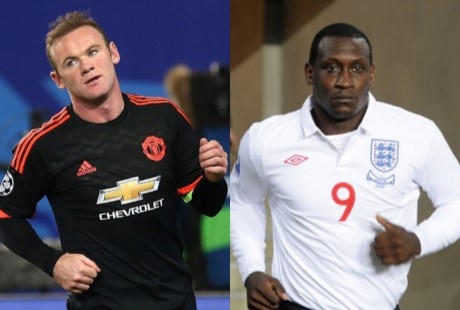

New research has found the body shape of footballers has changed with players getting taller, lighter and faster compared to players from the past five decades.
Muscles and power – epitomised by the likes of Alan Shearer, Emile Heskey and Wayne Rooney – have been replaced by the lean, slender physiques of today’s top players such as Jamie Vardy, Harry Kane and Marcus Rashford.
A new report co-authored by Dr Tom Webb, from the University of Portsmouth, revealed that modern well-maintained pitches, along with tough new training regimes, have had a major impact on the evolution of footballers’ body shapes.
The findings, published in the International Journal of Sports Science and Coaching, also have implications for the identification and development of talent to increase England’s chances of future success.
Obviously, the game is developing and evolving all the time but, even so, there does seem to be a very quick shift in the body type of some of the most successful players, at successful clubs. This has added consequence for the clubs and the recruitment of young players, as well as any player transfer strategy.
The research team included sports scientists at Portsmouth and Cardiff Metropolitan universities and was led by University of Wolverhampton.
They examined how body size, shape and age characteristics had changed for footballers since the 1970s. Findings showed footballers have steadily been getting taller, with an average height increase of a centimetre per decade, but in the most recent decade are now also lighter, nimbler and much more angular.
Dr Webb, an expert in sports management in the Department of Sport and Exercise Science, said: “We were quite surprised at the findings, and in particular the changes in body shape of those players who are successful in the modern game, these changes appear to have occurred very quickly.
"Obviously, the game is developing and evolving all the time but, even so, there does seem to be a very quick shift in the body type of some of the most successful players, at successful clubs. This has added consequence for the clubs and the recruitment of young players, as well as any player transfer strategy.
“Clubs should be aware of these developments, and it could help to inform any talent identification and development strategy at an elite club. Clubs take into account physiological metrics, as well as other factors, in any talent identification strategy or approach, and as such these findings will be of interest."
Footballers of today have adapted to the modern game, and as a result their body shape has altered. Modern players are ectomorphic, characterised by a lean, slender body, as opposed to the muscular, mesomorphic builds which were more common in the 1970s and 80s.
Lead researcher Professor Alan Nevill, a biostatistician and Professor of Sport at the University of Wolverhampton, said: “Footballers of today have adapted to the modern game, and as a result their body shape has altered. Modern players are ectomorphic, characterised by a lean, slender body, as opposed to the muscular, mesomorphic builds which were more common in the 1970s and 80s.
“A lot of this can be attributed to the increased quality of playing surfaces where footballers train and compete. Modern pitches are immaculate and well-maintained and not the mud baths that they used to be. Pitches used to get very heavy and soggy, particularly in mid-winter, which accounted for players being bulkier and more muscular.”
As recently as December last year, Belgium international and Manchester United star Romelu Lukaku admitted that his poor form at the start of this season was because he was too muscular.
Professor Nevill concurs: “Today’s players are more like endurance athletes than power athletes. To compete at today’s high levels, they are also working harder and harder so are much leaner.”
The findings, which examined more than 2,600 top-division players using football yearbook data, also showed a dramatic decrease in BMI, which Professor Nevill believes is more a measure of muscularity as in athletes it is an indication of lean body mass rather than fat mass. He said the research could have an impact on talent scouting for the future.
“Body shape is clearly important and English professional clubs might be advised to attract young, less muscular, more angular players as part of their talent identification and development programmes to improve future chances of success,” said Professor Nevill. “In an industry that is so financially competitive, any advantage that can be gained has the potential to positively influence future performance.”
